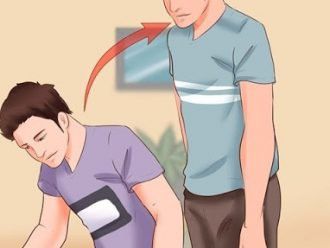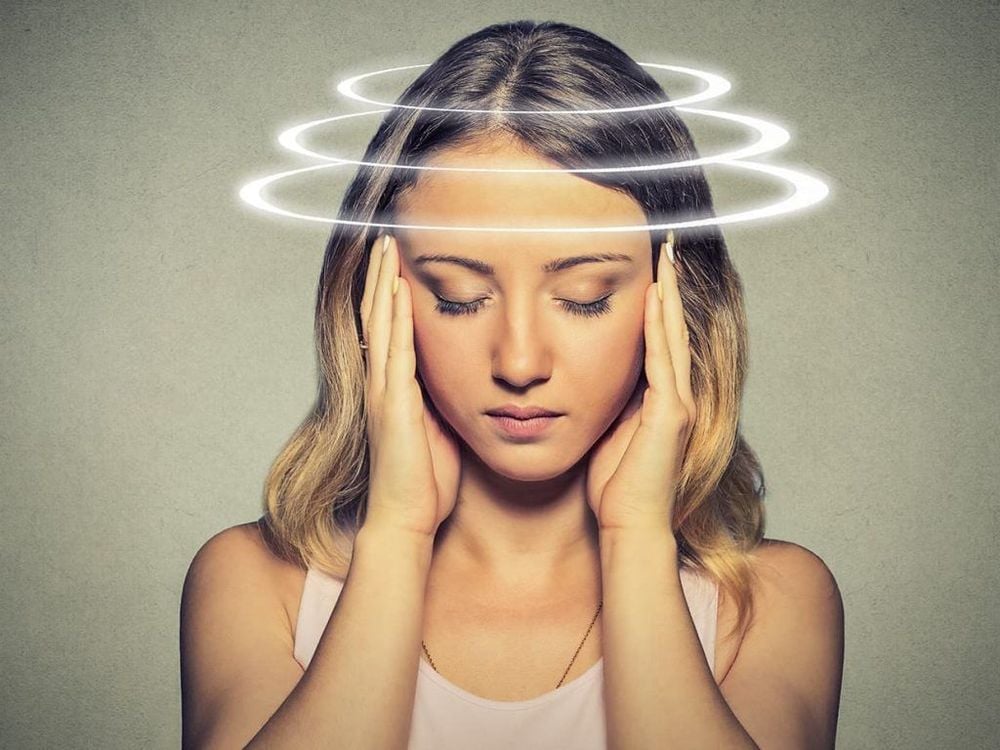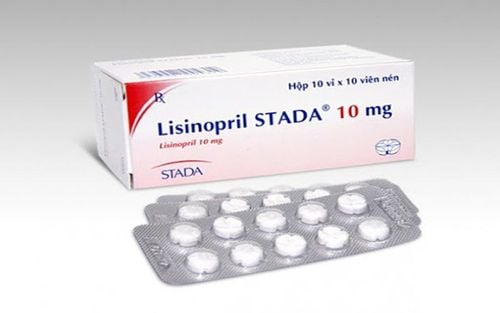This is an automatically translated article.
The article is professionally consulted by Master, Doctor Nguyen Thi My - Department of Medical Examination & Internal Medicine - Vinmec Danang International Hospital.Dizziness is an unpleasant feeling that everyone experiences once in their life. For benign paroxysmal positional vertigo, vertigo symptoms occur suddenly with intense intensity, causing confusion and fear in patients, reducing activity and quality of life.
1. What is benign paroxysmal vertigo?
The vestibule is considered a sense, sensing posture in space, thereby helping to maintain stability, body balance, posture as well as coordination of eye, head and trunk movements. The vestibular system includes a receptor, the semicircular canal located in the cochlea, nerves that conduct and analyze signals in the brain.When the semicircular canal is damaged, the patient will feel dizzy. In which, paroxysmal positional vertigo is the most common pathology in all ages but predominates in middle age. The disease occurs in both sexes but is more concentrated in women.
In addition to dizziness, the patient also experiences discomfort due to nausea - vomiting, headache, dizziness, dizziness. These symptoms share a prominent feature that is aggravated by changing positions, such as lying down to sitting, when turning the head. If you keep the same body position, the patient will see less and less. However, the disease will recur in waves after a few days to months, years later.
Trắc nghiệm: Bận rộn có ảnh hưởng đến sức khỏe của bạn không?
Cuộc sống hiện đại khiến chúng ta vì quá bận rộn mà quên chăm sóc sức khỏe cho chính mình. Ai cũng biết rằng lịch trình làm việc cả ngày có thể khiến bạn kiệt sức, nhưng cụ thể bận rộn ảnh hưởng thế nào tới sức khỏe? Hãy cùng làm thử bài trắc nghiệm dưới đây.
2. What are the causes of benign paroxysmal vertigo?
Up to now, there have been many theories about the cause of benign paroxysmal vertigo, but most of them have not been clearly proven. Of these, the hypothesis of the presence of small stones in the cochlea seems more convincing.
The cochlea attaches with three rings of semicircular canals, arranged in three different spatial planes. The circulation of fluid in the semicircular canals helps the body to orientate the posture. Therefore, when the body changes in a certain direction, the stone particles moving in the semicircular canal in that plane will stimulate the vestibular system, send signals to the brain, and initiate the sensation of dizziness. . As a result, the body has a reflex to lie still, keeping the head position where it feels most secure. The pebbles do not move anymore, the feeling of dizziness will subside.
Other causes of central and peripheral vestibular organ damage such as inflammation, sclerosis, degeneration to ischemia, hemorrhage or trauma also cause a very uncomfortable feeling of dizziness for the patient. patient.
However, these symptoms have nothing to do with posture. Therefore, each type of vertigo needs to be examined.

3. What are the symptoms of paroxysmal vertigo?
Dizziness is the most prominent symptom of this disease, usually occurs in the morning, right after waking up, the patient suddenly has a feeling that the house is spinning like upside down, tilted. Then, lying down again, the patient feels even more dizzy, causing them to panic and worry. However, they will realize that turning their heads, looking around will make symptoms worse, promote nausea, vomiting, so they tend to close their eyes and lie still. After that, the dizziness will subside on its own for a minute or two before disappearing completely.
However, as the name suggests, benign positional vertigo does not cause serious complications if the patient is resting on the bed, without falling or trauma if trying to walk. Besides, when examining, doing tests, cranial imaging will not record any abnormal signs. The patient has absolutely no weakness; Ear examination was also normal, with no changes in hearing.
4. How to treat benign paroxysmal vertigo?
Benign paroxysmal vertigo is exactly what the name suggests if the patient knows how to avoid triggers, adhere to vestibular stabilizers, and perform maneuvers to reposition the semicircular canal.4.1. Avoid changing positions too suddenly and too quickly
At all times, always remember not to change positions suddenly and quickly. Specifically, when changing from a lying position to sitting up, standing up or turning the head, bowing and tilting the head must also be done slowly and slowly. It is best to close the eyes to limit the visual reception of spatial change signals, reducing vestibular stimulation. After establishing the pose at the new position, slowly open your eyes.If you notice that dizziness often occurs when you wake up, then in your sleep, you should use many pillows to prop your head up, should lie on your back, avoid leaning to one side.
In addition, do not sit in a swivel chair or chair with a headrest that leans back too much, limit excessive leaning and bending movements such as picking up things, tying shoelaces.
4.2. Using drugs
Groups of drugs can assist in the correction of dizziness during acute attacks as well as the relief of symptoms of nausea and vomiting.Antihistamines should only be used when the patient has severe dizziness that does not improve much after stabilizing the posture. Some sedative drugs can be added if the person is overstimulated, anxious, scared.
However, drugs acting on the central nervous system will have side effects such as drowsiness, lethargy, and dizziness that are difficult to completely go away. Therefore, it should only be used when absolutely necessary and adhere to the dosage as directed by the doctor.
4.3. Exercises for vestibular system

Exercises can be done at the clinic with the support of physiotherapists or the patient can practice at home. If done correctly and patiently, unpleasant symptoms will improve significantly.
4.4. Other treatments
When dizziness occurs, it is necessary to stay calm, close your eyes, limit your head rotation and find a suitable position to rest. If you feel nauseous, you should control it by taking deep breaths and focusing on your breathing. Just follow this, the dizziness will quickly subside in a few minutes. Do not walk long distances, do heavy work, climb, operate vehicles or machinery when dizzy. Because these things cause more severe dizziness, lasting longer, and can even cause accidents for yourself and others. Keep the space in the room, the aisle clear, avoid messy and indiscriminate items. Add handles in bathtubs and toilets. Drink enough water every day, eat a balanced, varied diet rich in vitamins and minerals. Avoid drinking coffee, alcohol, carbonated soft drinks. Do not use stimulants, smoke or be exposed to secondhand smoke. Get enough sleep, rest in moderation, think optimistically. Have appropriate and moderate exercise habits. Benign postural paroxysmal vertigo is a common disease in the community. Information about the disease, how to respond and prevent it is essential to overcome these unpleasant symptoms and enjoy life confidently.Department of Examination and Internal Medicine at Vinmec International General Hospital holds specialized functions in the examination and treatment of diseases related to the central nervous system (cranial, meninges, brain, cerebrovascular, etc.) nerves in the skull, pituitary gland, spine, discs, spinal cord) and peripheral nervous system (nerves and ganglia outside the brain and spinal cord).
Master. American doctor has more than 6 years of experience as an internal medicine doctor at Hue Central Hospital, Hue University of Medicine and Pharmacy Hospital; Tam Tri Da Nang Hospital; Danang Hospital. Currently, he is a General Internal Medicine Doctor at Vinmec Da Nang International General Hospital.
Please dial HOTLINE for more information or register for an appointment HERE. Download MyVinmec app to make appointments faster and to manage your bookings easily.














